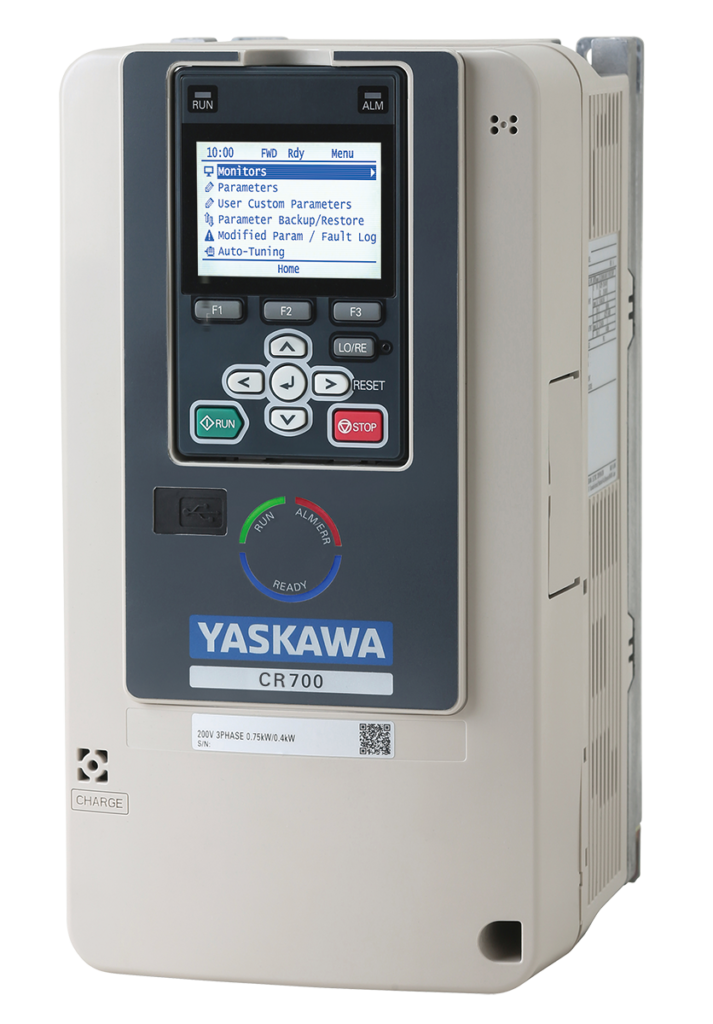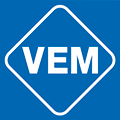 18.10.2022
18.10.2022
CR700 inverter from Yaskawa for secure and efficient crane operation
Intelligent load handling
When it comes to crane drives in shipbuilding, in ports, or in production, assembly, and storage halls, we need to consider not only the economic aspects but also the system’s technical features. Customers demand efficient solutions that facilitate operation while enabling intelligent load handling. When addressing these matters, Yaskawa draws upon its decades of experience with crane drives and, with the CR700, now offers a new inverter drive. Thanks to numerous intelligent functions specially designed for crane operation, this drive improves productivity, reduces energy and overall costs, enables preventive maintenance measures, and increases environmental sustainability.
An intelligent braking system is one of a crane inverter’s important features. However, the CR700 does not simply control mechanical brakes for smooth lifting and lowering by generating all torque at the motor shaft before the brake opens. It now also focuses on preventive maintenance for mechanical brakes. Crane operators can read the current number of brake-open commands at any time. That makes it easier to plan brake maintenance while increasing safety and availability. The smart features now also include the option of managing up to three different motor parameter sets in one inverter drive. This option allows operators to reduce the total investment costs. For instance, instead of the customary three inverter drives used in classic freight cranes—for the hoist, the drivetrain and the trolley—only one inverter drive is now used in succession.
Practice-oriented functions increase efficiency
Crane inverters must be intuitive to operate and deliver satisfying performance. That is why the customer’s needs are always our top priority. It can essentially be taken for granted that crane drives from Yaskawa are extremely robust and reliable drive components, since they are the result of more than 30 years of our experience in the crane industry. The engineers at Yaskawa have taken the CR700 drive inverter one step further, however, by placing additional performance-related focus on achieving 10 years of maintenance-free operation when the product is used constantly 24 hours a day. We also uphold this level of reliability, which customers have come to expect from Yaskawa, where the issue of “clean power grids” is concerned. Thus, all CR700 drives with 22 kW and more are delivered with an integrated DC reactor in order to prevent power grid soiling by upper shafts, and the THDi value is reduced considerably without external counter measures.
All known crane functions from the successful A1000 series were optimized once more for the CR700, and new crane functions were added. That means the CR700 now has not only enhanced brake management but also an integrated electronic anti-sway system, which improves efficiency and safety in long-distance and trolley travel applications, and a synchronous position control for tandem operation. The control algorithm in tandem operation makes is very easy to control the position of several CR700 crane drives simultaneously, with angular precision, and at optimized costs. External control circuits are superfluous as a result.
An additional crane function feature is the cable length information feature, which includes hook position detection. This function establishes the current hook position, which helps crane operators gently set down loads. However, the cable length information feature can also be used to activate virtual end switches and thus further optimize security.
An automatic load balancing option without encoder complements the enhanced crane functions. The innovative adaption of the motor load, which does not require a motor encoder, distributes the required torque evenly among the drives of the chassis. The decision to forgo the encoder has increased the crane’s availability, since it precludes the possibility of encoder failure. As a result, the system is less likely to be impacted by potential sources of error. In addition to automatic load distribution without a motor encoder, the CR700 also has functions for operation at light loads, as well as load detection when lifting (hoist monitoring). Thus, the inverter drive is able to detect whether the process starts with a full or light load and, in the event of a light load, automatically adjusts the application parameters for the hoisting/lowering speed. The result is a faster cycle time and improved crane performance.
Data communication and parameterization
Digital and analog inputs and outputs are available for data communication, as are network interfaces for all common fieldbus protocols. The integrated gateway functions can be used to further reduce investment costs. This means that up to five CR700 drives can be controlled using a single network communication card. The number of option cards for crane drives is decreased, which reduces the costs for the overall system. Both this feature and the smart commissioning wizard and intuitive keypad reduce the interactive start-up process to a minimum, which saves valuable time during initial commissioning.
Contact:
sales@vem.fi





